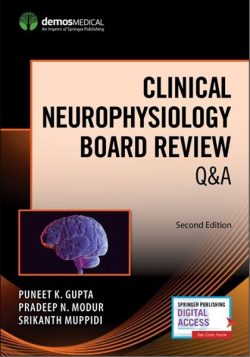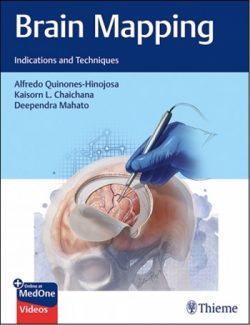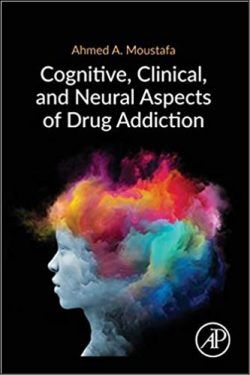This detailed book provides a laboratory manual and guidebook for the selection, implementation, and interpretation of a wide range of techniques in contemporary use in leading laboratories engaged in Huntington’s disease (HD) research worldwide. Only by understanding the pathology and pathogenic process at the fundamental molecular and cellular level can the research community expect to be able to slow or halt the disease process, repair the damage, and develop novel effective therapies to treat the symptoms of this condition, thus this volume collects the practical knowledge of its authors. Written for the highly successful Methods in Molecular Biology series, chapters include introductions to their respective topics, lists of the necessary materials and reagents, step-by-step, readily reproducible laboratory protocols, and tips on troubleshooting and avoiding known pitfalls.
1. Stereological Methods to Quantify Cell Loss in the Huntington’s Disease Human Brain
Nasim F. Mehrabi, Malvindar K. Singh-Bains, Henry J. Waldvogel, and Richard L.M. Faull
2. Assessing Autophagic Activity and Aggregate Formation of Mutant Huntingtin in Mammalian Cells
Eleanna Stamatakou, Ye Zhu, and David C. Rubinsztein
3. A Filter Retardation Assay Facilitates the Detection and Quantification of Heat-Stable, Amyloidogenic Mutant Huntingtin Aggregates in Complex Biosamples
Anne Steinhof, Franziska Schindler, Alexander Buntru, Sigrid Schnoegl, and Erich E. Wanker
4. Cellular Models: HD Patient-Derived Pluripotent Stem Cells
Charlene Geater, Sarah Hernandez, Leslie Thompson, and Virginia B. Mattis
5. Non-Mammalian Models of Huntington’s Disease
Anjalika Chongtham, Brett Barbaro, Tomas Filip, Adeela Syed, Weijian Huang, Marianne R. Smith, and J. Lawrence Marsh
6. Mouse Models of Huntington’s Disease
Pamela P. Farshim and Gillian P. Bates
7. Motor Assessment in Huntington’s Disease Mice
Stephen B. Dunnett and Simon P. Brooks
8. Automated Operant Assessments of Huntington’s Disease Mouse Models
Emma Yhnell and Andreas Heuer
9. Neurophysiological Assessment of Huntington’s Disease Model Mice
Elissa J. Donzis, Sandra M. Holley, Carlos Cepeda, and Michael S. Levine
10. Murine Models of Huntington’s Disease for Evaluating Therapeutics
Natalia Kosior and Blair R. Leavitt
11. Generating Excitotoxic Lesion Models of Huntington’s Disease
Mariah J. Lelos and Stephen B. Dunnett
12. Large-Brained Animal Models of Huntington’s Disease: Sheep
A. Jennifer Morton
13. Minipigs as Large-Brained Animal Model for Huntington’s Disease: From Behavior and Imaging to Gene Therapy
Ralf Reilmann and Verena Schuldenzucker
14. Non-Human Primate Models of Huntington’s Disease and Their Application in Translational Research
Romina Aron Badin
15. In Vivo Multidimensional Brain Imaging in Huntington’s Disease Animal Models
Julien Flament, Philippe Hantraye, and Julien Valette
16. Magnetic Resonance Imaging in Huntington’s Disease
Sarah Gregory, Rachael I. Scahill, Geraint Rees, and Sarah Tabrizi
17. Biofluid Biomarkers in Huntington’s Disease
Filipe B. Rodrigues, Lauren M. Byrne, and Edward J. Wild
18. Assessing and Modulating Kynurenine Pathway Dynamics in Huntington’s Disease: Focus on Kynurenine 3-Monooxygenase
Korrapati V. Sathyasaikumar, Carlo Breda, Robert Schwarcz, and Flaviano Giorgini
19. Assessing Mitochondrial Function in In Vitro and Ex Vivo Models of Huntington’s Disease
I. Luísa Ferreira, Catarina Carmo, Luana Naia, Sandra Mota, and A. Cristina Rego
20. Using Genomic Data to Find Disease-Modifying Loci in Huntington’s Disease (HD)
Peter Holmans and Tim Stone
21. CRISPR/Cas9-Mediated Genome Editing for Huntington’s Disease
Gabriel Vachey and Nicole Déglon
22. Methods for Assessing DNA Repair and Repeat Expansion in Huntington’s Disease
Thomas Massey, Branduff McAllister, and Lesley Jones
23. Translating Antisense Technology into a Treatment for Huntington’s Disease
Roger M. Lane, Anne Smith, Tiffany Baumann, Marc Gleichmann, Dan Norris,
C. Frank Bennett, and Holly Kordasiewicz
24. Disease Modification through Trophic Factor Delivery
Mari Savolainen, Dwaine Emerich, and Jeffrey H. Kordower
25. Methods to Quantify Cell Signaling and GPCR Receptor Ligand Bias: Characterization of Drugs that Target the Endocannabinoid Receptors in Huntington’s Disease
Amina M. Bagher, Robert B. Laprairie, Melanie E.M. Kelly, and Eileen M. Denovan-Wright
26. Dissection and Preparation of Human Primary Fetal Ganglionic Eminence Tissue for Research and Clinical Application
Victoria H. Roberton, Anne E. Rosser, Anne-Marie McGorrian, and Sophie V. Precious
27. Robust Induction of DARPP32-Expressing GABAergic Striatal Neurons from Human Pluripotent Stem Cells
Marija Fjodorova and Meng Li
28. Quality Assessment and Production of Human Cells for Clinical Use
Lindsay Fraser, Kevin Bruce, John M. Campbell, and Paul A. De Sousa
This detailed book provides a laboratory manual and guidebook for the selection, implementation, and interpretation of a wide range of techniques in contemporary use in leading laboratories engaged in Huntington’s disease (HD) research worldwide. Only by understanding the pathology and pathogenic process at the fundamental molecular and cellular level can the research community expect to be able to slow or halt the disease process, repair the damage, and develop novel effective therapies to treat the symptoms of this condition, thus this volume collects the practical knowledge of its authors. Written for the highly successful Methods in Molecular Biology series, chapters include introductions to their respective topics, lists of the necessary materials and reagents, step-by-step, readily reproducible laboratory protocols, and tips on troubleshooting and avoiding known pitfalls.
Includes cutting-edge techniques for the study of Huntington’s Disease





